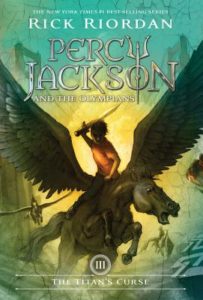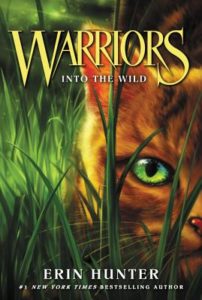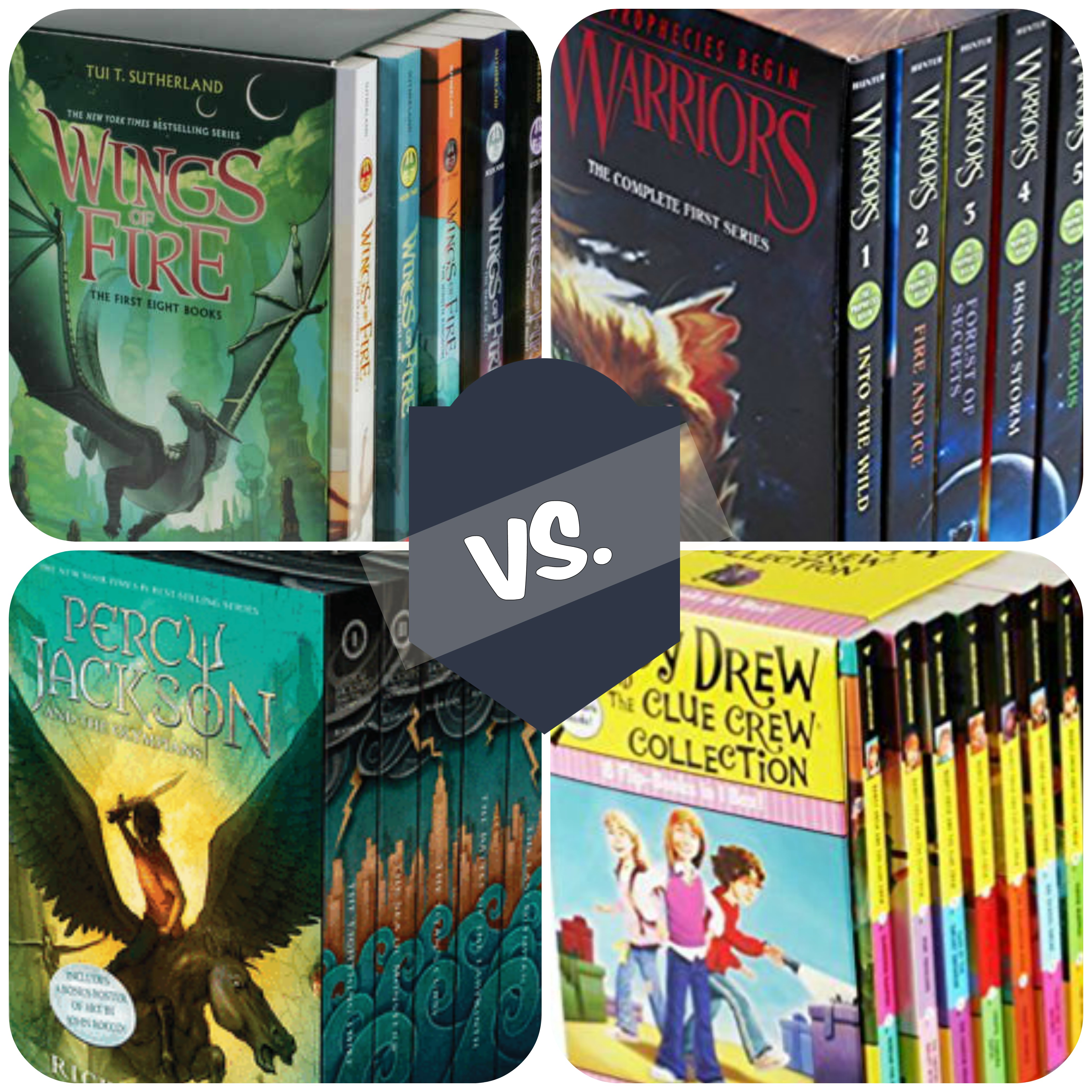by Jen Jobart
Sometimes one book just isn’t enough. Sometimes kids want to spend more time with characters they love, or in a world they find intriguing. And sometimes, for writers, one book just isn’t enough to tell the story we want to tell. That’s where series come in.
You have two options when writing a series–one that grows out of your own writing, and one that is a collaborative experience.
Writing a series yourself
Sometimes, you get to the end of the book you’re writing and realize you have more to say. Maybe the characters are still whispering their stories to you. Or maybe the world you’ve created still inspires you. In any case, you may find that you’re writing a series, instead of a standalone book.
 Examples of series that were written by a single author include Wings of Fire by Tui T. Sutherland, and Percy Jackson and the Olympians by Rick Riordan. We can learn a lot by reading those books and understanding the flow of the story over multiple volumes. (See our post on learning craft from series books.)
Examples of series that were written by a single author include Wings of Fire by Tui T. Sutherland, and Percy Jackson and the Olympians by Rick Riordan. We can learn a lot by reading those books and understanding the flow of the story over multiple volumes. (See our post on learning craft from series books.)
Most agents don’t recommend querying an entire series at once. If you think your book might have series potential, write the first book and see how it does. There’s no sense spending a lot of time writing several books until you’re sure you can sell at least one. Put all of your energy into writing the best possible first book that you can, first.
The November 26 episode of the Writing Excuses podcast “Q&A on Novels and series, with Brian McClellan” has several good ideas about writing series. In particular, if you do sell your first book and it attracts a good following, you should find out what your readers love about it (as opposed to what you love about it) so that you can give your readers more of what drew them to the first book. You can do this by reading your 4- and 5-starred reviews on Goodreads. Those people are your target audience, so they are the ones you want to listen to. The podcast has other great ideas, too, and is worth a listen if you think you might be writing a series.
Working with a Book Packager
What do the Warriors, Beast Quest, Goosebumps, Magic Treehouse, and Nancy Drew series have in common? All of them were created by book packagers. How’s that, you ask? Well, we’re here to tell you.
Book packagers come up with a concept for a series, then find one or more writers who can deliver on the concept. (For example, read Amy Boesky’s story about writing Sweet Valley High books.) The packager and the writer work together closely on the book as it is being written. Book packagers are involved in a project end to end, and may take on every aspect of it, including editing, illustrating, and sometimes even printing.
Sometimes, book packagers come up with an idea and market the resulting books to publishers. Other times, publishers come up with an idea, and then contract with a book packager to bring it to fruition.
Creating a book in cooperation with a book packager is more like the process of making a movie, in that the book is written collaboratively by a team of people who bring different skill sets to the table.
 Many people haven’t heard of book packaging, because it’s not widely publicized. It sort of breaks the spell to know that Erin Hunter, the author of the Warriors series, doesn’t actually exist. But the six people behind the pseudonym–Kate Cary, Cherith Baldry, Tui Sutherland, Gillian Philip, Inbali Iserles and Victoria Holmes–do! They all collaborate together to create the series.
Many people haven’t heard of book packaging, because it’s not widely publicized. It sort of breaks the spell to know that Erin Hunter, the author of the Warriors series, doesn’t actually exist. But the six people behind the pseudonym–Kate Cary, Cherith Baldry, Tui Sutherland, Gillian Philip, Inbali Iserles and Victoria Holmes–do! They all collaborate together to create the series.
Working for a book packager can be a great way to break into writing. One of the most difficult things for new writers is figuring out a story idea that has the potential to grow into a successful book. Starting with an idea that was created by a seasoned team takes this risk out of the equation. Working with a packager gives you mentors and guidance that can help you quickly improve your writing in a real-world setting. And finally, it can be easier to break into book packaging than to get your manuscript picked up from the slush pile. Many well-known writers, such as Katherine Applegate, got their start in book packaging.
There are potential downsides of working with a book packager. If you really want to see a book on the shelf that carries your name, book packaging may not be for you. Since they’re more collaborative projects, many packaged books don’t carry the name of the author. Also, most authors get a flat rate for a packaged book. If the book turns out to be wildly successful, the publishing house and packager get the profits, not the writer. Finally, whereas you can take all the time you need to write a book that you conceive yourself, book packagers often have set deadlines that you need to adhere to.
Intrigued? Here are a few links to more information.
- Book Packaging: Under-explored Terrain For Freelancers
- Wikipedia Book Packaging Page
- SCBWI Professional Series Talks – Book Packaging
- What is Book Packaging?
Action: Think you might want to write a series? If you have your own idea, there are plenty of resources available to help. Or if an idea just isn’t coming to you, think about working with a book packager! It might be the beginning of a beautiful relationship.
Jen Jobart writes middle grade fiction and is always sending characters she loves on dangerous adventures. She is an active member of the SCBWI and has studied writing for children through Stanford’s Continuing Studies program. When Jen’s not writing, she’s outside gardening and raising chickens at her home in the San Francisco Bay Area. Find her at www.jenjobart.com.


COMMENTs:
0